 Recently a Beech/Raytheon Baron 58TC crashed in New Jersey, killing four. Although it will be a long time before investigators release their findings on the final causes of the tragedy, early reports said a friend of the Baron’s owner was flying the airplane. Regardless of the cause of the accident, this brings to mind a number of insurance considerations for an airplane owner who loans his or her airplane to someone else, or ever has it ferried or flown for maintenance.
Recently a Beech/Raytheon Baron 58TC crashed in New Jersey, killing four. Although it will be a long time before investigators release their findings on the final causes of the tragedy, early reports said a friend of the Baron’s owner was flying the airplane. Regardless of the cause of the accident, this brings to mind a number of insurance considerations for an airplane owner who loans his or her airplane to someone else, or ever has it ferried or flown for maintenance.
Let’s look at some insurance considerations that apply to letting others fly your airplane. Remember, this information is generalized, intended to give you informed questions to ask when reading your insurance policy or talking with your agent. Your written policy is the final word in what is or is not covered when other pilots fly your airplane.
When You Are Covered
Your insurance policy names the aircraft owners as “covered persons,” and stipulates when your coverage is in effect. Usually, your policy is effective only when (a) the owner or owners listed on the policy as pilots are the ones flying the airplane, (b) “named pilots” (more on that in a moment) are flying the airplane, or (c) persons meeting the Open Pilot Warranty (OPW) are flying the airplane. Delving into more detail about each:
“Owner(s)” should be self-explanatory;
“Named pilots” are persons whom you’ve listed on the policy because they are not owners of the airplane and they do not meet the OPW; and,
The Open Pilot Warranty lists minimum pilot experience requirements for persons who are not owners and not “named pilots” who may fly the airplane. Your insurance coverage is in effect anytime a pilot meeting these requirements flies the airplane, and you (the owner) have no responsibility to notify the insurance company before they do so.
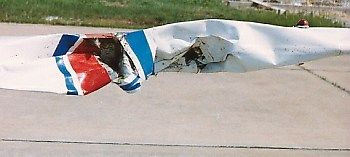 Obviously, because it’s taking such an enormous financial risk in insuring your airplane, the insurance company needs to be certain it’s charging what it feels to be fair compensation for assuming that risk. The insurance underwriter also has the right to say, “No, we won’t insure so-and-so in this airplane.” It therefore requires all owners (who presumably will be flying the airplane a lot) to be named to the policy. Any other pilots who do not meet the insurance company’s minimum experience requirements (the OPW) for that make and model of airplane must also be “named,” so the insurance company knows about their lower-than-OPW experience level, and can say “no” or charge additional premium as appropriate to assume this greater risk.
Obviously, because it’s taking such an enormous financial risk in insuring your airplane, the insurance company needs to be certain it’s charging what it feels to be fair compensation for assuming that risk. The insurance underwriter also has the right to say, “No, we won’t insure so-and-so in this airplane.” It therefore requires all owners (who presumably will be flying the airplane a lot) to be named to the policy. Any other pilots who do not meet the insurance company’s minimum experience requirements (the OPW) for that make and model of airplane must also be “named,” so the insurance company knows about their lower-than-OPW experience level, and can say “no” or charge additional premium as appropriate to assume this greater risk.
Before you shout, “The insurance company can’t tell me who can fly my airplane!” remember that you’re still the owner, and you still can let your friends fly the aircraft if you wish. The insurance company can’t stop you. They can, however, decide (before or after the fact) that the person you let fly it falls outside the scope of your insurance contract, and that they are not financially obligated if something should go wrong. It’s still your choice.
OPW Requirements
The OPW for most airplanes usually require a significant number of logged hours in the class (multiengine, tailwheel, retractable gear, etc. – the insurance term differs from “class” as seen by the FAA), as well as a lot of time in the specific aircraft type. The more complex the airplane, the more stringent the OPW requirements. In pressurized airplanes, they may even include graduation from FlightSafety or similar training programs as a condition of the OPW.
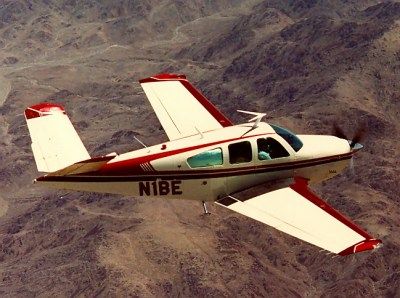 Depending on the insurance underwriter the requirements may be very specific: Beech Travel Air time might not count for a Baron, or vice versa; time in a Baron 55 may not even count for Baron 58, and almost never will 55 or 58 time count for a pressurized 58P. Time in a Cessna 310, 320 or 340 is not likely interchangeable, nor is experience in a Piper Twin Comanche a substitute for the Seneca. Beech/Raytheon Bonanza models 33, 35 and 36 may or may not be interchangeable, depending on the insurance company. Time in a Cessna 172 never counts toward a 182; Aeronca and Citabria time usually are exclusive for OPW purposes. “Bigger” airplane time (a Cessna 210, for instance) won’t usually apply to the OPW of a similar “smaller” type (like the 182RG). Some underwriters are strict enough to differentiate between PA28-160 and PA28-180 Cherokee time. Check your policy and get a statement in writing from your insurance agent before you assume someone’s experience “qualifies” for the OPW.
Depending on the insurance underwriter the requirements may be very specific: Beech Travel Air time might not count for a Baron, or vice versa; time in a Baron 55 may not even count for Baron 58, and almost never will 55 or 58 time count for a pressurized 58P. Time in a Cessna 310, 320 or 340 is not likely interchangeable, nor is experience in a Piper Twin Comanche a substitute for the Seneca. Beech/Raytheon Bonanza models 33, 35 and 36 may or may not be interchangeable, depending on the insurance company. Time in a Cessna 172 never counts toward a 182; Aeronca and Citabria time usually are exclusive for OPW purposes. “Bigger” airplane time (a Cessna 210, for instance) won’t usually apply to the OPW of a similar “smaller” type (like the 182RG). Some underwriters are strict enough to differentiate between PA28-160 and PA28-180 Cherokee time. Check your policy and get a statement in writing from your insurance agent before you assume someone’s experience “qualifies” for the OPW.
In short, your aircraft insurance is in effect only when a (a) named owner, (b) named pilot, or (c) pilot meeting the OPW is flying as pilot-in-command.
Owner Responsibility
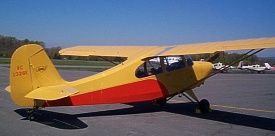 Most policies make it clear that the aircraft owner is responsible for determining that the pilot-in-command meets the requirements of coverage. You (as owner) must be sure the pilot-in-command has the experience he or she says. This goes for all time requirements in your policy – as well as the Federal Aviation Regulations – so it’s up to you to check the pilot’s total time, medical currency, time in class, time in type, and recency of experience (IFR currency, landing currency, and night currency), as appropriate to the flight. If you “thought” Joe Pilot was IFR current and an accident investigation proved otherwise, then your policy may be void. Insurance companies will not “cut you some slack” for a “few” hours time-in-type here, or a couple of logged night landings there: If the pilot was not “legal” and/or did not meet the requirements of the policy, then you the owner are usually not covered.
Most policies make it clear that the aircraft owner is responsible for determining that the pilot-in-command meets the requirements of coverage. You (as owner) must be sure the pilot-in-command has the experience he or she says. This goes for all time requirements in your policy – as well as the Federal Aviation Regulations – so it’s up to you to check the pilot’s total time, medical currency, time in class, time in type, and recency of experience (IFR currency, landing currency, and night currency), as appropriate to the flight. If you “thought” Joe Pilot was IFR current and an accident investigation proved otherwise, then your policy may be void. Insurance companies will not “cut you some slack” for a “few” hours time-in-type here, or a couple of logged night landings there: If the pilot was not “legal” and/or did not meet the requirements of the policy, then you the owner are usually not covered.
Further, if an owner or “named pilot” submits false information on an insurance application, or it can be proved his or her logs were falsified to make it appear he or she was “legal” and met the insurance requirements, then again your policy may be void.
Airworthiness
The owner is usually responsible for providing an airworthy airplane. If the airplane is out of annual, has an outstanding AD compliance requirement, or has any other squawk that renders it unairworthy generally or unairworthy for a particular type of flight (night or IFR, for instance), then coverage may be void if the airplane is flown, even by a non-owner.
Pilot History
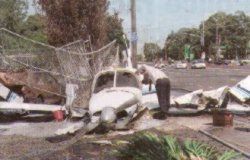 Policy applications require owners and “named pilots” to report any accidents, incidents or certificate actions within the last three to five years. Some policies’ language says that pilots cannot fly under the OPW if those pilots have had any accidents, incidents or certificate actions in the same time frame: If a pilot has had an accident or action in the recent past, then the insurance company wants to evaluate the pilot and, if it chooses to grant coverage, will require that pilot be “named” (and that an appropriate premium is charged ) regardless of his or her total experience. It’s up to you as owner to quiz OPW pilots on their accident, incident and certificate action history.
Policy applications require owners and “named pilots” to report any accidents, incidents or certificate actions within the last three to five years. Some policies’ language says that pilots cannot fly under the OPW if those pilots have had any accidents, incidents or certificate actions in the same time frame: If a pilot has had an accident or action in the recent past, then the insurance company wants to evaluate the pilot and, if it chooses to grant coverage, will require that pilot be “named” (and that an appropriate premium is charged ) regardless of his or her total experience. It’s up to you as owner to quiz OPW pilots on their accident, incident and certificate action history.
Fuel exhaustion is the one “unforgivable sin” in aircraft insurance. Most policy applications will ask if the pilot(s) have ever had a fuel exhaustion accident, not just within the last three to five years. A fuel exhaustion accident often renders that pilot virtually uninsurable for the rest of his or her life – and that goes for renting or borrowing other airplanes as well, depending on the language of the policy covering the rented or borrowed airplane.
If an owner or “named pilot” has an accident, incident or certificate action after submitting application paperwork, then you may be in a real “gray area” as far as your coverage is concerned. You might be covered, or you might not, if that pilot has an accident. You may have to prove that you had no knowledge of the change in that pilot’s status.
“Named Pilots Only”
If you’ve saved money on your policy by having the statement “named pilots only” added, or if your underwriter adds it because of the complexity or your airplane, then you must name any pilot who flies the airplane for your coverage to be in effect. Insurance companies may routinely add the “named pilots only” provision for very complex airplanes (like a pressurized type), if the airplane’s insured value exceeds some value (I’ve seen it on policies for airplanes worth more than $750,000), and/or on policies with high limits of liability (such as $2 million or more).
Repair Station Pilots
Some policies have a statement that “employees of FAA Repair Stations” may fly the airplane, even if they do not meet the policy’s OPW and are not “named pilots,” and your coverage is still in effect. This requires that (a) the purpose of the flight is directly related to maintenance test flying, or ferrying the airplane directly to or from the locations where repairs, inspections, maintenance or alterations will take place, and (b) the pilot for the flight is an employee of an FAA-approved (Part 145) Repair Station. Not just any old mechanic, airplane modifier or maintenance shop will do, for insurance purposes covering flights by non-OPW pilots.
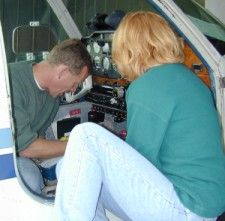 Pilots who are not direct employees, but instead are contracted by the maintenance shop, are another “gray area” you might want to clarify in writing with your insurance company before the flight takes place.
Pilots who are not direct employees, but instead are contracted by the maintenance shop, are another “gray area” you might want to clarify in writing with your insurance company before the flight takes place.
A Part 145 Approved Repair Station is the maintenance equivalent of a Part 141 Flight School (as opposed to Part 61 training). If you’re unsure about whether your mechanic’s shop is a certificated Repair Station, ask for the Repair Station Certificate Number. If they act like they don’t know what they’re talking about, chances are they are not an FAA Repair Station, and any of their pilots who fly your airplane must meet your policy’s OPW.
Maintenance flights under this policy provision usually cover flights only with “required flight crew.” In the case of what we fly, one person only, unless a second person comes along specifically as a recordkeeper or in some other capacity reasonably considered to be “required” to conduct the test flight.
Of course, if your policy does not have the “FAA Repair Station” clause, then any pilot flying your airplane for maintenance must meet your policy’s OPW or be a “named pilot” for your insurance to be in effect when they fly.
Legal vs. Illegal Flights
 Your policy provides coverage only if the flight is conducted legally, and for legal purposes. If owners authorize non-owners to fly charters or provide instruction for hire in an airplane not legal for commercial use or if the policy is valid only for personal and business use, for instance, then there likely is no coverage. If owners let pilots they know to be illegal to act as pilot-in-command fly the airplane, then coverage is void.
Your policy provides coverage only if the flight is conducted legally, and for legal purposes. If owners authorize non-owners to fly charters or provide instruction for hire in an airplane not legal for commercial use or if the policy is valid only for personal and business use, for instance, then there likely is no coverage. If owners let pilots they know to be illegal to act as pilot-in-command fly the airplane, then coverage is void.
SITUATION: You lend your airplane to someone without a current medical certificate – no coverage.
SITUATION: You let your buddy run drugs in your Cherokee Six – no coverage.
SITUATION: You can reasonably prove you did not know your friend was running drugs in your Cherokee Six – your coverage is likely still in effect.
SITUATION: You tell your friend he or she can pull the airplane out any time and fly it, and give him or her a key. He or she then gets drunk and flies the airplane – your coverage is likely still in effect, since you had no way of knowing he or she would show up drunk and fly.
SITUATION: You tell your friend he or she can fly the airplane, but they have to come by your home or office to get the key. He or she comes by after drinking, and flies anyway – “gray area”; a court may decide that you or your agent (the secretary who gives them the key, for instance) was responsible for detecting alcohol on the pilot’s breath before granting access in the form of the key.
Reimbursement
 Personal and business use policies very strictly define what expenses may be reimbursed for the policy to still be in effect. Most limit what you can receive as compensation for use of your airplane to be nothing more than the direct expenses for that flight: Fuel, oil, ramp fees and flight planning charges assessed during the time someone else had control of your airplane. Other policies allow for compensation of additional airplane expenses by stating the cost of the direct expenses may be doubled, for instance, to arrive at the maximum allowable compensation. Some policies permit calculation of hourly operating costs, including costs of insurance, hangaring, reserves for maintenance and overhaul, etc., and arriving at a reasonable hourly charge to be reimbursed. Whichever the case with your policy, there is a maximum amount you can receive as reimbursement for use of your airplane, for your policy to be in effect. It’s likely far less than the “going rate” for renting a similar airplane from an FBO. From the insurance company’s standpoint, there’s greater potential liability with a rental airplane, which in the eyes of the courts is a commercial enterprise, and personal/business use policywriters don’t want to be on the line for that additional risk.
Personal and business use policies very strictly define what expenses may be reimbursed for the policy to still be in effect. Most limit what you can receive as compensation for use of your airplane to be nothing more than the direct expenses for that flight: Fuel, oil, ramp fees and flight planning charges assessed during the time someone else had control of your airplane. Other policies allow for compensation of additional airplane expenses by stating the cost of the direct expenses may be doubled, for instance, to arrive at the maximum allowable compensation. Some policies permit calculation of hourly operating costs, including costs of insurance, hangaring, reserves for maintenance and overhaul, etc., and arriving at a reasonable hourly charge to be reimbursed. Whichever the case with your policy, there is a maximum amount you can receive as reimbursement for use of your airplane, for your policy to be in effect. It’s likely far less than the “going rate” for renting a similar airplane from an FBO. From the insurance company’s standpoint, there’s greater potential liability with a rental airplane, which in the eyes of the courts is a commercial enterprise, and personal/business use policywriters don’t want to be on the line for that additional risk.
Receiving Flight Instruction
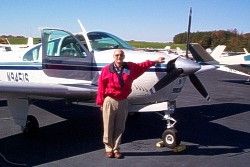 It’s in the insurance company’s best interests that you receive flight instruction in your airplane. If an owner or a “named pilot” receives dual instruction in the airplane, even if paying the instructor for his or her services, then the coverage is in effect. OPW pilots generally are not covered while receiving instruction in your airplane; persons who are receiving instruction in the airplane to “get up to” the minimum requirements of the insurance policy are voiding the coverage as well, no matter what the experience of the person proving instruction or whether the instructor is an owner or a “named pilot.”
It’s in the insurance company’s best interests that you receive flight instruction in your airplane. If an owner or a “named pilot” receives dual instruction in the airplane, even if paying the instructor for his or her services, then the coverage is in effect. OPW pilots generally are not covered while receiving instruction in your airplane; persons who are receiving instruction in the airplane to “get up to” the minimum requirements of the insurance policy are voiding the coverage as well, no matter what the experience of the person proving instruction or whether the instructor is an owner or a “named pilot.”
In most cases, the instructor must meet the OPW for your policy, or be “named” and “approved” by the insurance underwriter as a “special circumstances” instructor beforehand. “Special circumstances” instructors are sometimes not approved unless the owner can prove that there are no instructors meeting the OPW available within a reasonable distance from the airplane’s home base.
It’s A Legal Contract
Remember, an insurance policy is a legal contract between the insurance underwriter and the owner(s) of the airplane. It stipulates when the underwriter is obligated to pay the owners for loss, and the requirements the owner must follow for the underwriter to be financially responsible. Any violation of those requirements may void the coverage; the owner(s) is/are responsible for ensuring that the provisions of the contract are met. Insurance lawyers can be extremely literal when interpreting policy language.
Further, the underwriter may have no financial responsibility to third parties, including pilots flying under the OPW or non-owners “named” to the policy. If a non-owner is sued as a result of flying the airplane, there may be no coverage for the non-owner, “named,” OPW or not. That’s what “non-owned” insurance policies are for. If a non-owner causes damage to the airplane, the insurance company reserved the right to subrogate against (sue) that non-owner to recover whatever it may pay to the owner(s) of the airplane.
Non-Legal Advice
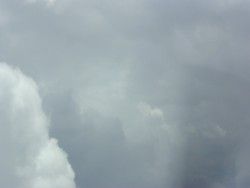 My non-legal advice is that you strongly consider whether you wish to let non-owners fly your airplane. If you are so generous as to let others fly it, check pilot logs and currency requirements before you allow them to do so. If your airplane will be flown as part of an inspection, repair, maintenance or alteration, confirm beforehand that the pilot meets your policy’s OPW. If not, and your policy has the FAA Repair Station provision, ensure that the shop doing your work is a certificated FAA Repair Station and that the pilot is a direct employee, and not just a contractor, of that shop.
My non-legal advice is that you strongly consider whether you wish to let non-owners fly your airplane. If you are so generous as to let others fly it, check pilot logs and currency requirements before you allow them to do so. If your airplane will be flown as part of an inspection, repair, maintenance or alteration, confirm beforehand that the pilot meets your policy’s OPW. If not, and your policy has the FAA Repair Station provision, ensure that the shop doing your work is a certificated FAA Repair Station and that the pilot is a direct employee, and not just a contractor, of that shop.
In all cases, read your policy carefully, clarify any “gray areas” with your insurance company beforehand, and get answers in writing from your agent or broker if you have any questions before “someone else flies your airplane.”


































